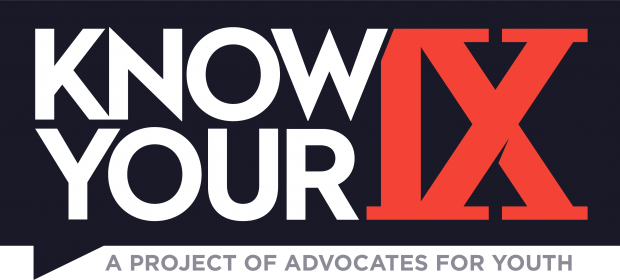Remote Campus Operations Pose Threat to Student Survivor Rights

Abstract
As the COVID-19 pandemic has forced us into these unprecedented times, The U.S. Department of Education under the Trump Administration has rolled back the rights of student survivors of gender-based harassment. The new policy makes it more difficult and emotionally-taxing for student survivors to report their incidents of harassment. As a campus infamous for its sexual harassment rates, UNC must implement Title IX policies that best protect and support student survivors especially as COVID-19 campus operations have narrowed those eligible to report under campus Title IX.
On college campuses like our own, the Title IX policy, initially established in 1972 and pioneered by Patsy Takemoto Mink, protects students from gender-based discrimination (Fischer & Good, 1994). The policy applies to discrimination complaints within academics, athletics, and sexual harassment (Fischer & Good, 1994). Title IX is supposed to help survivors of sexual harassment and violence gain peace, justice, and ensure all students enjoy a nonhostile educational environment. On May 6, 2020, the U.S. Department of Education under Secretary Betsy DeVos released a new, revised Title IX ruling to go into effect on August 14, 2020 (Fenwick, 2018) which rolled back the protections for student survivors of sexual assault.
The Daily Tar Heel published an op-ed in July by UNC students regarding their demands for justice and search for answers on how UNC planned to execute the new policies of the revised Title IX ruling. Despite having clear requests and a petition of over 2,400 signatures, UNC administrators responded with vague statements that only half-addressed the voiced concerns. The university’s response has only become more ambiguous as the COVID-19 pandemic has changed the way colleges operate. A key issue with the 2020 Title IX guidelines is that schools aren’t responsible for investigating sexual harassment complaints that do not occur on-campus or at school-affiliated buildings such as official Greek housing. This is concerning even during a regular year when roughly 87 percent of college students live off-campus (Sharpe, 2016). Under the same circumstances, 92 percent of sexual harassment and violence occur off-campus. When UNC released its decision on August 17, 2020 to switch to an entirely remote semester, on-campus students flocked to find roommates, apartments, houses, and any off-campus housing they could. Many on-campus students decided to return home.
More students than ever before are living in spaces unaffiliated with the university. As a result, fewer students will be able to report claims of student-on-student sexual violence that will be considered valid under Title IX. Students attending class in online academic platforms also poses the question of how UNC plans to address complaints of online gender-based academic discrimination and cyber harassment. Does harassment during Zoom calls or break-out rooms qualify under Title IX policies? These are questions that UNC administrators must address.
On top of invalidating off-campus reports, other problematic changes of the 2020 Title IX adjustment include allowing informal resolution, such as mediation, which wasn’t allowed under the Obama-era guidelines (Fenwick, 2018). The revised ruling eliminates the 60-day timeframe that sexual assault cases must be investigated under, only permits the accused assaulter to appeal the judgement, and allows direct cross-examination (Fenwick, 2018). These modifications mean that survivors can be required to speak directly with their perpetrator and selected representatives such as fraternity brothers and parents. They also mean that cases can be extended over long timeframes, causing the survivor to relive traumatic experiences. Additionally, the ruling gives the accused more due process by allowing only them to appeal the case’s decision and not the survivor.
The policy changes seem intended to deter survivors from reporting. The potential drop in reports would go against the stable trend of the past two decades, where the number of Title IX complaints has dramatically increased (Reynolds, 2019). Surveys have shown that the number of people ho experience sexual harassment has remained constant over the years but, Title IX complaints skyrocketed in 2009 with the implementation of Obama-era guidelines which provided greater confidentiality and less burdensome reporting for survivors (Reynolds, 2019). If sexual harassment reports drop with the new guidelines, it isn’t because fewer individuals are being harassed; it is because the system is structured to largely ignore their trauma.
School policies should reflect the issues that most affect the students and staff. Therefore, school policies should reflect the unprecedented times in which we are all currently living. UNC needs to validate off-campus Title IX claims and eliminate the vagueness that has followed UNC’s decision to operate remotely. It is our job as students, survivors, and allies of survivors to take a stand and demand that UNC administrators readdress the implementation of the new Title IX ruling and its relation to COVID-19 school operations. Organize, take a stand, and be a voice for those muzzled by the perpetuation of victim-blaming and campus rape culture.
Sources
Fenwick, K. (2018). Why Social Workers Should Care about Changes to Title IX under Trump. Social Work, 63(3), 269–271. https://doi.org/10.1093/sw/swy021
Fischer, A. R., & Good, G. E. (1994). Gender, Self, and Others: Perceptions of the Campus Environment. Journal of Counseling Psychology, 41(3), 343–355.
Reynolds, C. (2019). The Mobilization of Title IX across U.S. Colleges and Universities, 1994-2014. Social Problems, 66(2), 245–273. https://doi.org/10.1093/socpro/spy005
Sharpe, R. (2016, August 5). How Much Does Living Off-Campus Cost? Who Knows? (Published 2016). The New York Times. https://www.nytimes.com/2016/08/07/education/edlife/how-much-does-living…
